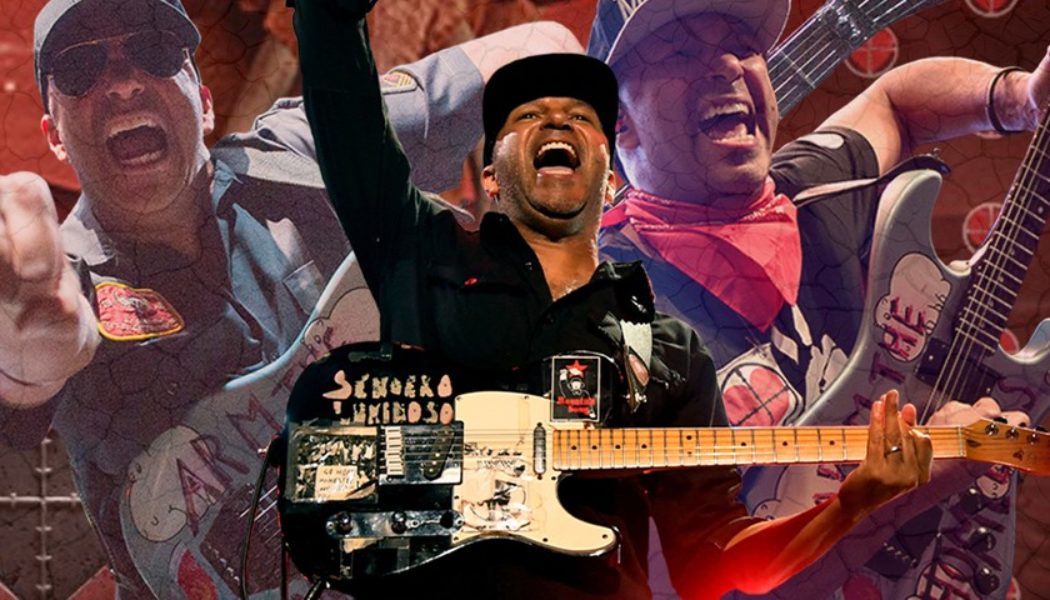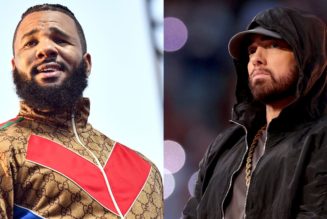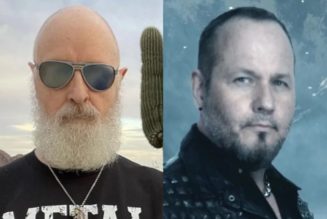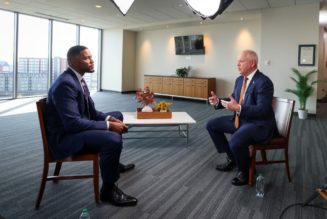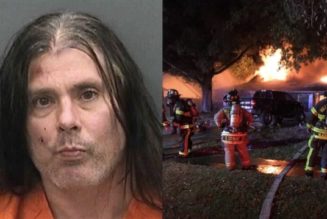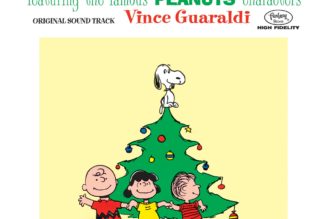
Tom Morello‘s never been one to settle. Since the late ’80s, the legendary guitarist has defied convention, merged genres, and pushed the limits of what’s possible on the instrument.
From the sizzling funk and hip-hop-infused riffs of Rage Against the Machine to the soaring harmonies of Audioslave, from the social justice-infused folk music of The Nighwatchman to the retrofuturistic sound of Prophets of Rage, Morello has explored several styles of guitar playing over his decades in the industry. One of his latest projects is The Atlas Underground, an endeavor centered around the concept of a guitarist as a DJ.
Morello spoke to HYPEBEAST as he was gearing up for the release of The Atlas Underground Fire, his second Atlas Underground album after an eponymous 2018 debut. Though the 2020s are his fifth decade as a professional musician, his enthusiasm for creating and exploring hasn’t been dulled — in fact, according to Morello himself, it’s sharper than ever and The Atlas Underground has invigorated him in an entirely new way.
“I firmly believe that the electric guitar is the greatest instrument ever invented. There’s no other instrument that has the same combination of nuance and power,” said Morello. “However, I also firmly believe that the electric guitar is the future, not just the past. I never want to be content and say what’s happened with the electric guitar before is enough.”
Over the course of an expansive interview, Tom Morello discussed The Atlas Underground Fire‘s unique recording process, how he manages to remain creative from the confines of his home, how he maintains his signature “language” on the guitar as he experiments with different styles of playing and much more. See the full conversation below, and expect The Atlas Underground Fire to release via Apple Music, Spotify and other streaming platforms on October 15.
[embedded content]
HYPEBEAST: Between your Comandante EP, the Catastrophists EP with the Bloody Beetroots, singles with Serj Tankian and Pussy Riot, your Maximum Firepower podcast and this new album, you’ve been pretty busy. Does working on multiple projects at the same time invigorate you?
Tom Morello: Yes. Having all those projects to work on was definitely a life raft during lockdown and a way for me to communicate behind the “borders of the bunker.” All my time was spent at home, so doing those two EPs, the singles and the podcast was a way to stay connected to the outside world during a period of isolation.
You recorded a lot of the guitar parts for this album on your phone, even though you have a home studio. How and why did that come about?
Yeah, pretty much every guitar part on The Atlas Underground Fire was recorded via voice memo on my phone. I have a studio at my house, but I’ve never really run it solo. There’s usually an engineer who will come over, and the only knob he’ll let me touch is the volume knob [laughs]. Obviously, I couldn’t have the engineer come over during lockdown, so for the first time in decades, I was confronted with this endless horizon of not being able to record music.
Thankfully, inspiration came from an unlikely source. I was actually reading an article on Kanye West, and he was bragging about recording vocals on his phone’s voice memo app. I figured I’d try to record guitar parts on my phone, so I set up on a little folding chair in front of my half stack and everything sounded great. I wound up sending the riffs I’d recorded off to different producers, engineers and artists around the world, and they became the building blocks for this album.
“I’d go to my studio with no preconceived notion of what the day would bring, pick up a guitar and come up with four or five riffs, figure out who I wanted to send them to and see who responded to what, until the album came together.”
Was that DIY-style method of recording freeing for you?
It was completely freeing. The main difference between recording like that now and the bare-bones recording I’d do when I was younger, though, is I sent the riffs I recorded to Bruce Springsteen, Chris Stapleton and Damian Marley [laughs]. In a really trying time period where every day was very much the same, being able to record like that kept me connected to the artistic unknown.
I’d go to my studio with no preconceived notion of what the day would bring, pick up a guitar and come up with four or five riffs, figure out who I wanted to send them to and see who responded to what until the album came together. This method was born of necessity, but it completely changed the way I compose music and the way I collaborate. It felt like musical pen pals: I’d send all these sounds off to people who work in so many different genres, then excitedly wait to get their additions to my sounds back. A time that I originally feared would become an endless drought of non-creativity instead became the most fertile and creative recording period of my entire life.
How did you choose the guests for The Atlas Underground Fire?
There was no uniform way. Sometimes I’d just shoot a bunch of riffs off to producer friends like the Bloody Beetroots or Protohype, we’d make a track and when I had the track back I’d say “who would sound great on this?” Other times, I’d have specific artists in mind and reach out to them directly so we could make something from scratch.
[embedded content]
The album’s lead single is “Highway to Hell” with Bruce Springsteen and Eddie Vedder. Covering such a classic jam with two other icons of rock is huge — how did that come together?
The three of us have a history with “Highway to Hell.” Back in 2014, I was touring with Bruce Springsteen and the E Street Band in Australia, and we were in Perth, the home of Bon Scott [AC/DC lead singer]. I went to Bruce and said, “do you think there’s any way that the E Street Band and AC/DC might overlap?” He said he’d think about it, and we rehearsed “Highway to Hell” at soundcheck the next few days.
We were then set to play at this huge Melbourne soccer stadium in front of 80,000 people, and Eddie Vedder just happened to be there because he was on a solo tour of Australia. I went to Bruce again and said “what do you think about opening our show with ‘Highway to Hell’ and bringing Eddie out to join in? AC/DC is king here, and ‘Highway to Hell’ is the unofficial national anthem.” He was like “that sounds like a pretty good idea.” It was an apex moment in the history of live rock and roll. If you think you’ve seen people go apesh*t crazy, you haven’t unless you were there on that night.
So as I was finishing this record with all these great young artists like Bring Me the Horizon, Phantogram, Protohype and Sama’ Abdulhadi, I realized that I wanted to do a song with my rock and roll brothers too. I remembered that magical, incendiary moment on stage, and thought “let me call Bruce and Eddie, and have a go at one of the greatest rock songs of all time with two of the greatest rock singers of all time.”
Do you have a favorite riff or solo on the album, or do you love them all equally?
As far as solos go, there are two that come to mind. The solo on “Let’s Get the Party Started” is one of the craziest solos I’ve ever played, and that’s saying a lot because I always try to out-crazy myself [laughs]. I sent the original version of that solo to the Bring Me the Horizon guys, and they’re like “Whoa! What have you done?”
The other one is from “On the Shore of Eternity,” which is an eight-minute track with Sama’ Abdulhadi. I originally sent her these roaring Blue Oyster Cult and Black Sabbath-inspired riffs, and she was like “I … don’t really know what to do with these” [laughs]. I was like “thank you for your honesty — why don’t you send me something totally fresh? Pretend you’ve never heard a single note of music I’ve played.” She sent over this Arabic trance track, I put my headphones on with no preconceived notions, found my inner Charlie Parker and sent three different riffs back to her to edit into the final song.
“I firmly believe that the electric guitar is the greatest instrument ever invented. There’s no other instrument that has the same combination of nuance and power. However, I also firmly believe that the electric guitar is the future, not just the past … I never want to be content and say what’s happened with the electric guitar before is enough.”
You’ve mentioned that the concept of “guitarist as DJ” is a driving force behind The Atlas Underground. Do you feel like you unpacked that concept a little further on this album?
Absolutely. I firmly believe that the electric guitar is the greatest instrument ever invented. There’s no other instrument that has the same combination of nuance and power. However, I also firmly believe that the electric guitar is the future, not just the past. The idea with The Atlas Underground is to forge that future by fearlessly navigating different genres. I never want to be content and say what’s happened with the electric guitar before is enough.
You’ve had so many different sounds in so many different groups, from the ultra-unique funk/rap/rock mix of RATM to the soaring solos of Audioslave, but no matter where or how you’re playing, everyone knows when it’s Tom Morello on the guitar. How are you able to maintain that unique sound when your career has taken you in so many different directions?
I started thinking about my signature sound in the early ‘90s, and realized there are two different categories of people who play instruments: musicians and artists. The first 10 years that I played the guitar, I was a very technically talented musician. [To be a musician] requires technique, yes, but to be an artist requires technique and ideas.
I started looking at myself as the “DJ of the band” when I was with Rage Against the Machine. A guitar is just a piece of wood with six strings and some wires, but it can be manipulated in so many different ways. When I realized that, I started establishing my “language.” I’ve been evolving that “language” for the last three decades.
Relating the record to that language I’ve established, I love being a solo artist because there’s a certain purity in that vision. Threading my guitar playing through all the songs on The Atlas Underground Fire was a really fun challenge. However, I always loved being part of a band too because you get chemistry and you can join with other individuals to transcend anything you could do on your own. The Atlas Underground Fire is kind of the best of both worlds. It’s this overarching guided vision, but each song takes on a life of its own and goes somewhere I never would have predicted when I came up with the initial riff.
“In order for music to be compelling, it has to be authentic.”
Over the course of your career, social justice has been a key piece of your music. It’s definitely not absent on The Atlas Underground Fire, but the main focus of the album seems to be musical experimentation and the melding of genres. Did you approach the album with a different mindset than you might have as a member of Rage or when you were working on a Nightwatchman project?
In order for music to be compelling, it has to be authentic. I didn’t want to ignore the time that this record was made in, so there are instrumental call-outs on songs like “Charmed I’m Sure,” “Harlem Hellfighter” and “On the Shore of Eternity.” A record that I’m involved in must be anchored in songs of resistance too, so “Hold the Line” and “The Achillies List” directly address that need. “On the Shore Of Eternity” is a song of resistance as well, because it spotlights a fearless Palestinian DJ. Even the gender makeup and ethnic makeup of the record are political statements in and of themselves.
One specific thing I’ll say about “The Achillies List” is that its title comes from a ‘70s Planet of the Apes movie, Conquest of the Planet of the Apes. The apes are a working-class group that rises up to overthrow their fascist human overlords — who have this “Achillies List” of apes they feel might be intelligent or dangerous enough to strike at their weaknesses. I always thought that was a list that I’d like to be on.
What’s your favorite thing about this record?
That it was a glass-half-full project. It was recorded during a really tough period for me, one that felt like the most depressing and least creative time of my life. However, I pushed through to create music I’m really proud of. Summoning the internal fortitude to overcome those feelings and joining forces with these collaborators who became a lifeline for me was big, and it not only made this time survivable — it turned it into an oasis of great creativity.
